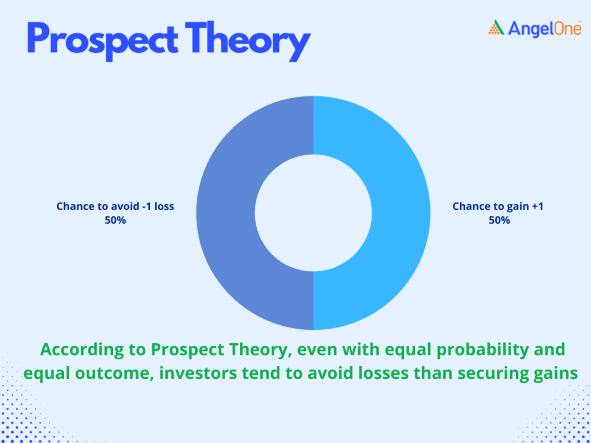It is found that people are risk-averse when they have to decide between alternatives that involve risk and uncertainty. This is the basis of Prospect Theory, a theory in psychology that has relevance in Behavioural Economics and the stock market. Read along to find out if you behaved the same way proposed in Prospect theory.
Prospect theory, sometimes referred to as the loss-aversion theory, was introduced by two psychologists, Daniel Kahneman and Amos Tversky, in their paper “Prospect Theory: An Analysis of Decision under Risk,” published in the “Econometrica” journal in 1979.
Let us look at the two instances offering the same result in two ways,
- Mutual Fund XYZ has given an average return of 10% pa for the last 3 years
- Mutual Fund XYZ has given 25%, 15% & -10% return in last 3 years
Even though both above options mean the same and pitching the same mutual fund, it is found that most people choose option 1 over option 2. Though both the choices offer the same result, people tend to pick the option showing perceived gains than losses. This is what the Prospect theory states. Investors prefer to refuse the option of avoiding losses and go with the one with perceived gains even with an equal probability and outcome. It says that losses cause a more significant emotional impact on an individual than an equivalent amount of gains.

Three biases of Prospect theory
1. Certainty
Among the several choices given, humans prefer the option with certainty. Let us look at two instances:
➢ Certainty of Gains
Given the following two options,
- 100% chance to win Rs 1000
- 90% chance to win Rs 2000 or nothing
In the above case, most people choose option 1 for the certainty it provides because uncertainty leads to significant stress, which humans tend to avoid.
➢ Certainty of Losses
Given the following two choices,
- 100% chance of losing Rs 900
- 90% chance of losing Rs 1000 or nothing
In the above case, most people prefer the second option. This is because in aiming to avoid losses, humans become risk-seeking and take the gamble over a sure loss in the hope of losing nothing.
2. Isolation effect
According to German psychologist Hedwig Von Restorff, when multiple stimuli are presented, the stimulus that differs from the rest is more likely to be remembered. For example, in the last sentence, the highlighted part of the text is more likely to be remembered than the rest.
In prospect theory, the isolation effect occurs when we focus on differences between the given options rather than similarities.
For example, give an option of
- • 50% chance of winning a prize
OR
- • 50% chance of losing a prize
Though the outcomes and probabilities in the above options are similar, we tend to look at the differences in presentation i.e, winning and losing, and go with choice 1 rather than choice 2.
3. Loss Aversion
Loss Aversion is us fearing losses than the joy of gains. The reason being we tend to remember losses more profoundly than gains.
For example, if one makes Rs 200 in profits and Rs 100 in losses, the person will focus on the loss even though they gain Rs 100. People tend to place greater weight on the loss when given a choice that presents an equal gain or loss. So, even when the two outcomes are similar, people tend to reject the option as the losses seem more likely.
Prospect theory evaluates various aspects of decision-making. Furthermore, we should note that the other equally crucial factors in decision-making are not included in this model. However, prospect theory is widely used across disciplines to analyze the decision-making process involving the choices of gains and losses such as probability analysis, stock market, etc.
Disclaimer: The blog is exclusively for educational purposes.
Learn Free Stock Market Course Online at Smart Money with Angel One.
